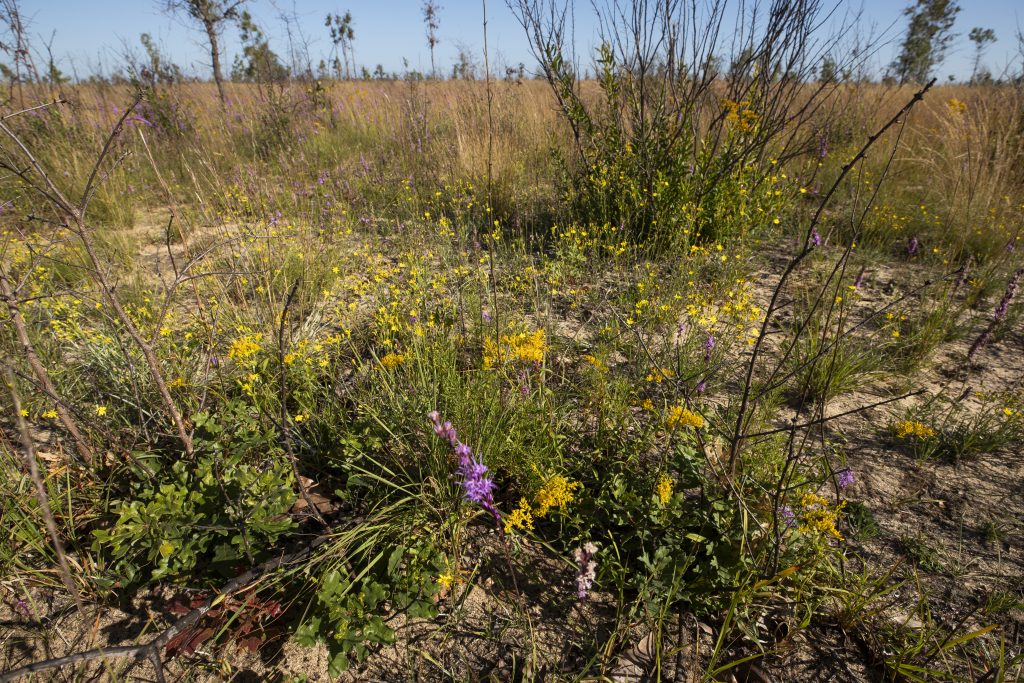Fall is not typically the season when we expect to see high plant activity, but in Florida’s longleaf pine savannas, fall thrive with colors. These unique ecosystems, characterized by their open canopy of towering longleaf pines and a diverse understory of grasses and wildflowers, are particularly beautiful in the fall, when seasonal flowering highlights the rich plant diversity that characterize these habitats (Figure 1).
If you take a walk through longleaf pine savannas this season, you will likely notice several species of blazing star (Liatris spp.) standing out with tall, spiky clusters of purple flowers, which attract pollinators such as bees and butterflies. A similar plant, Florida paintbrush (Carphephorus corymbosus), also attracts predators. For example, you might spot lynx spiders camouflaged on top of paintbrush flowers, waiting to ambush unsuspecting insects (Figure 2).
Another common fall bloomer is the goldenrod (Solidago spp.) with its characteristic cascading spikes of yellow flowers. A common misconception is that goldenrod flowers cause allergies; in reality, ragweed pollen is to blame in most cases. In fact, while ragweed relies on wind to disperse its light, abundant pollen, goldenrods are primarily insect-pollinated. This means that their pollen is larger and heavier, and they generally produce it in smaller quantities, so it doesn’t become airborne as easily.
Although less conspicuous, many native grasses also flower during the fall in longleaf pine savannas. For example, toothache grass (Ctenium aromaticum) often blooms in summer, but it produces its distinctive corkscrew-shaped spikes following seedfall in the fall. Wiregrass (Aristida beyrichiana), a common native grass species in these habitats, frequently flowers during this season and can also give us important indication on site management (Figure 3). In fact, its flowering is primarily fire-stimulated as it tends to produce flowers and seeds when burned during the early summer. Therefore, a sea of flowering wiregrass often indicates that a site was recently burned!
Fall flowering in longleaf pine savannas is more than just a colorful seasonal change — it is a reminder of the ecological resilience and biodiversity of these systems. If you want to learn more, about the plant and wildlife they support, you can click on these additional resources below:
EDIS: Bees and fire: how does fire in longleaf pine savannas affect bee communities?
EDIS: Pinus palustris: longleaf pine
Florida Wildflower Foundation
Florida Native Plant Society
- Wild Turkey Habitat - September 15, 2025
- Longleaf Pine Savannas: Fall Flower Walk - September 13, 2024
- A New Camera Trap Monitoring Program for Private Landowners - September 15, 2023



